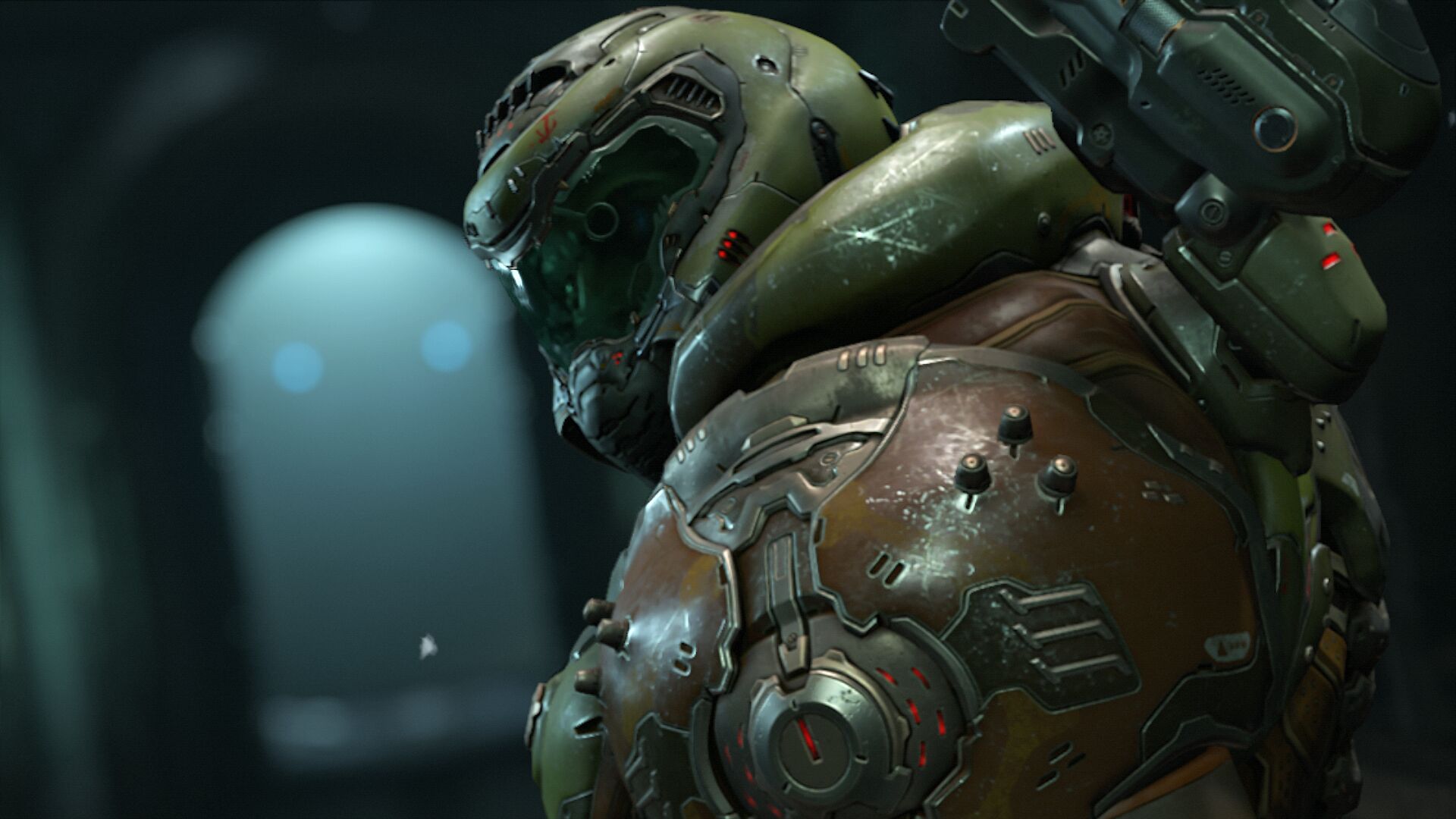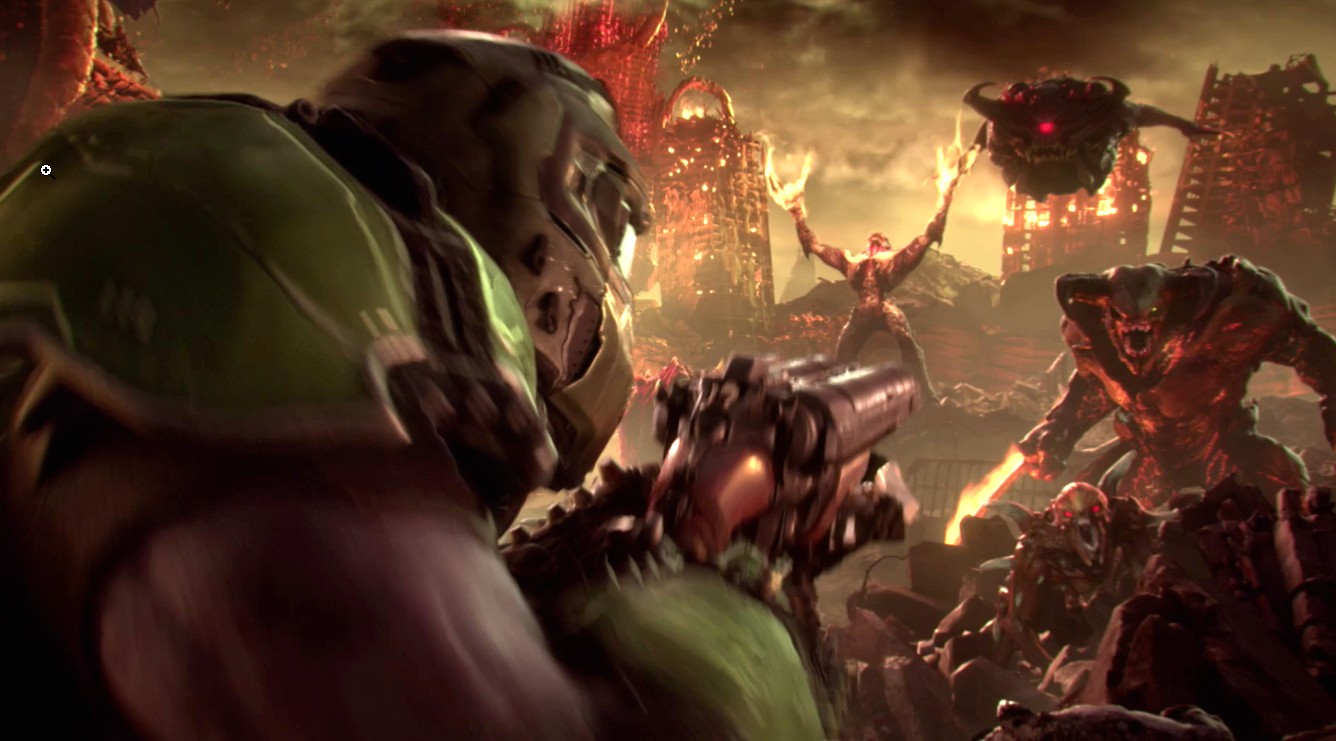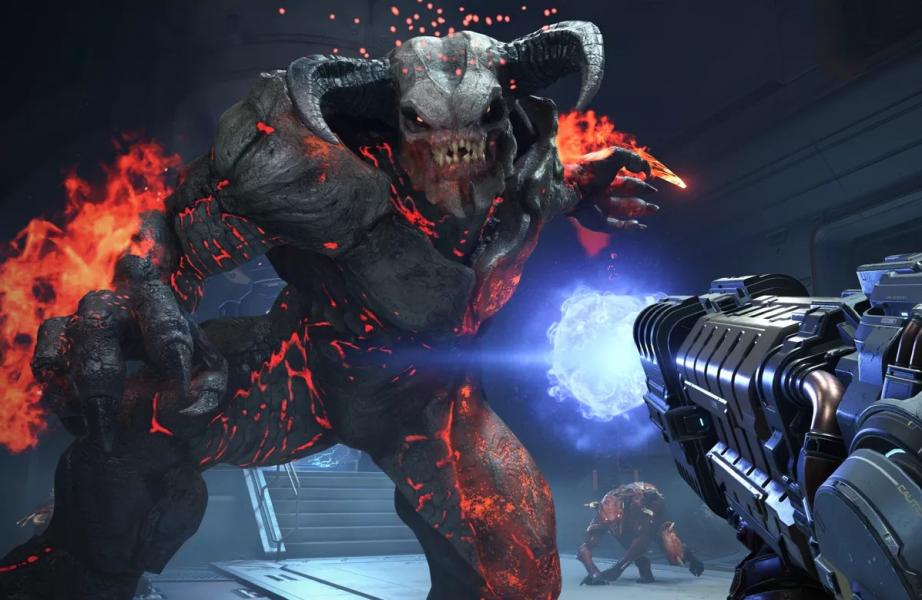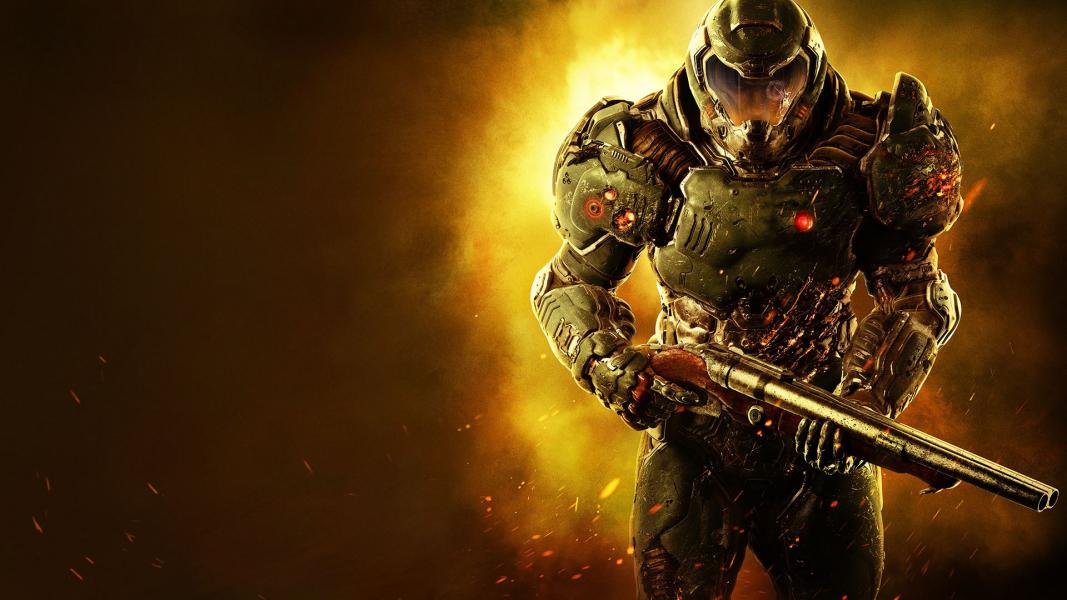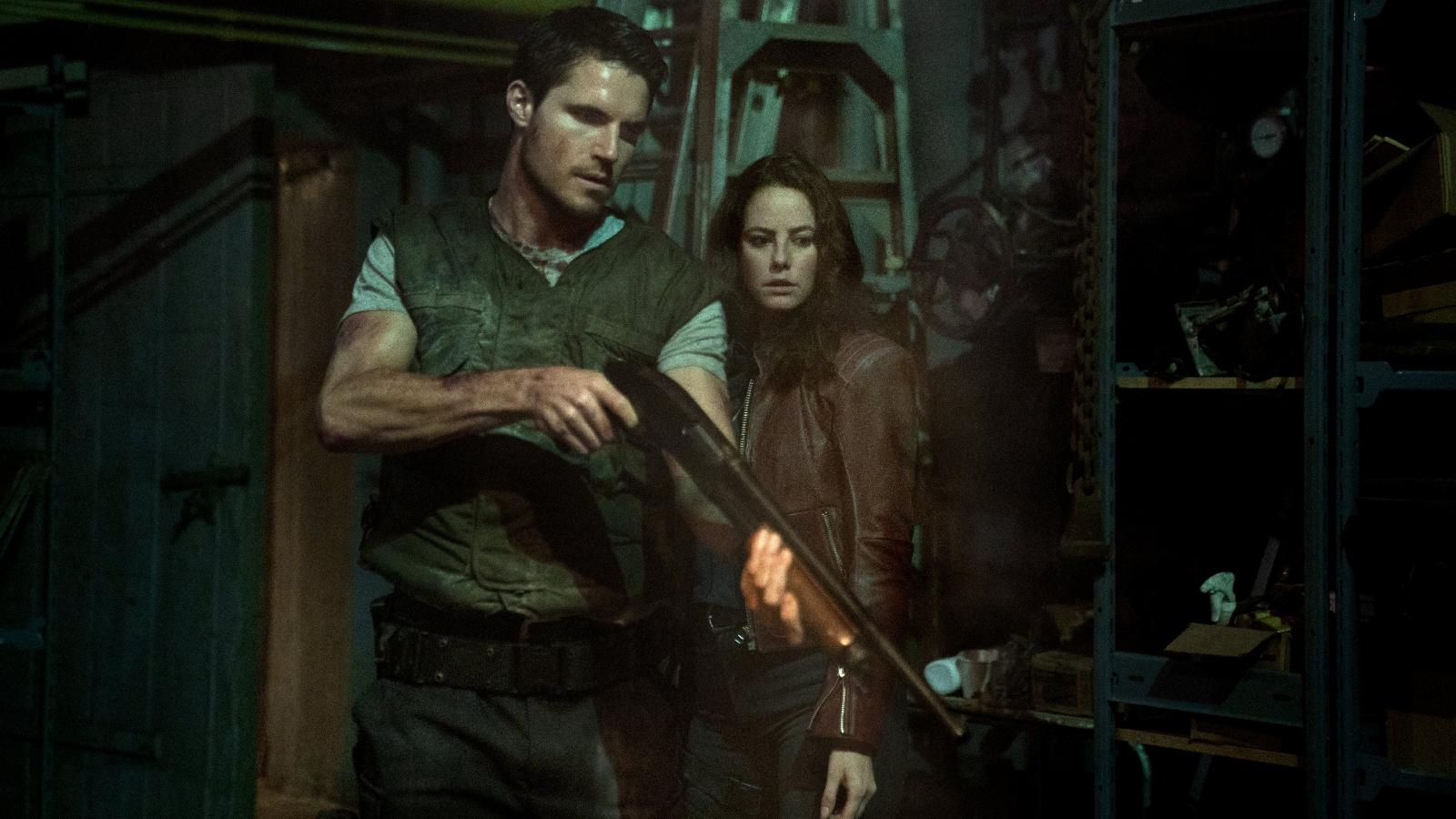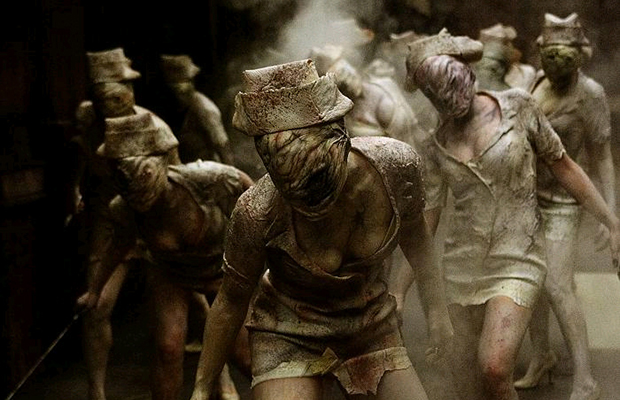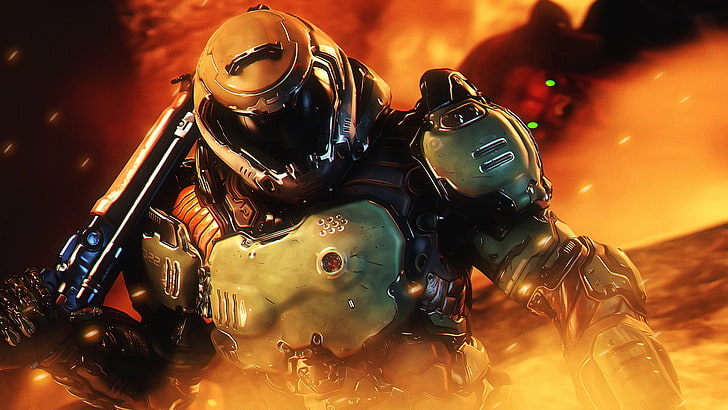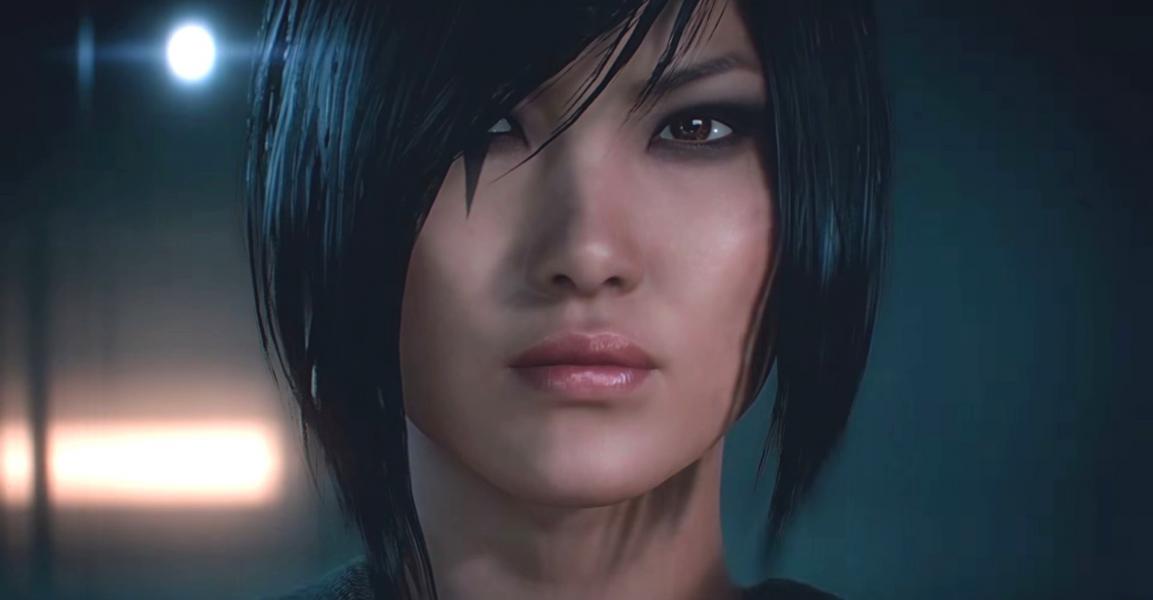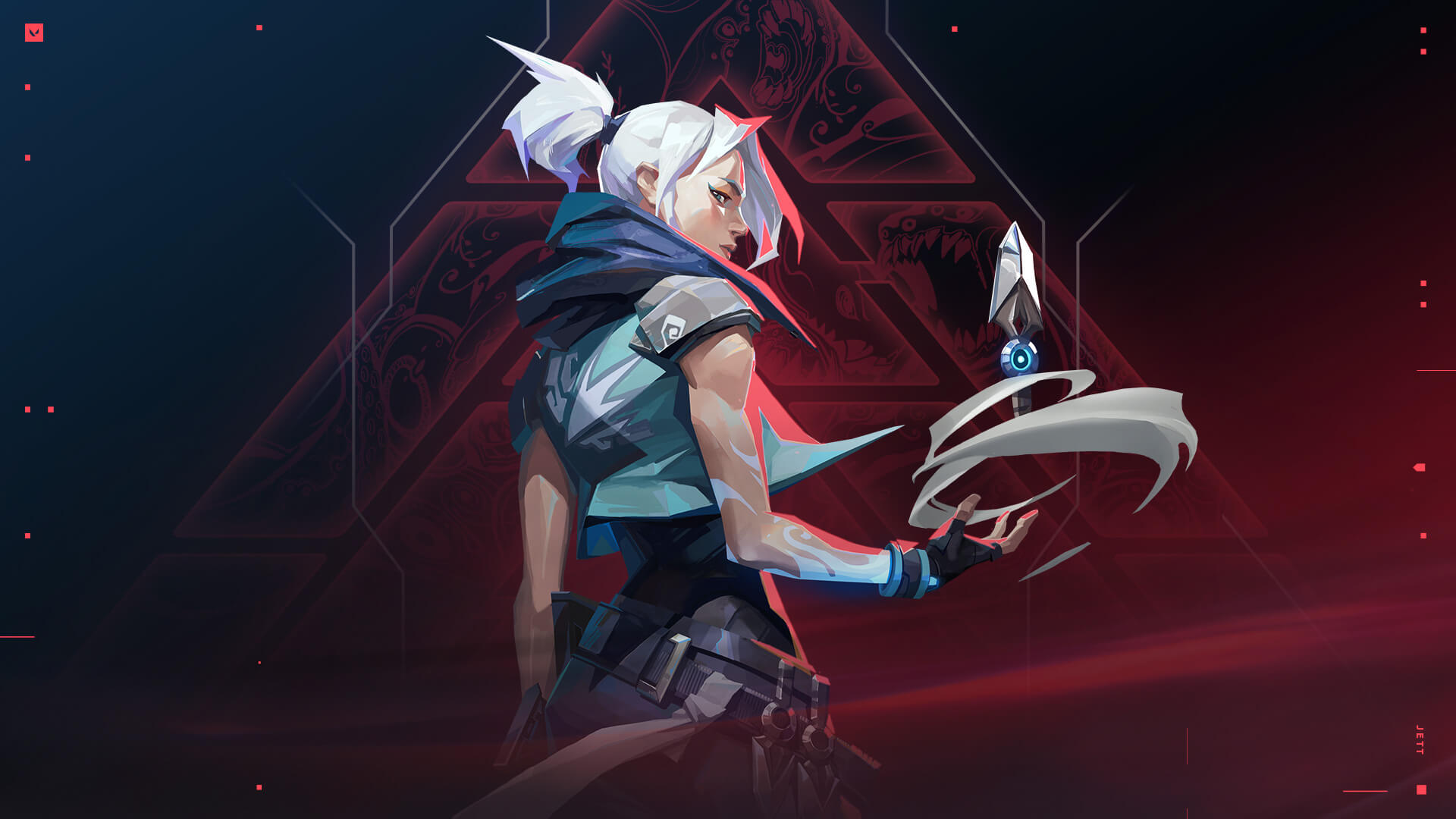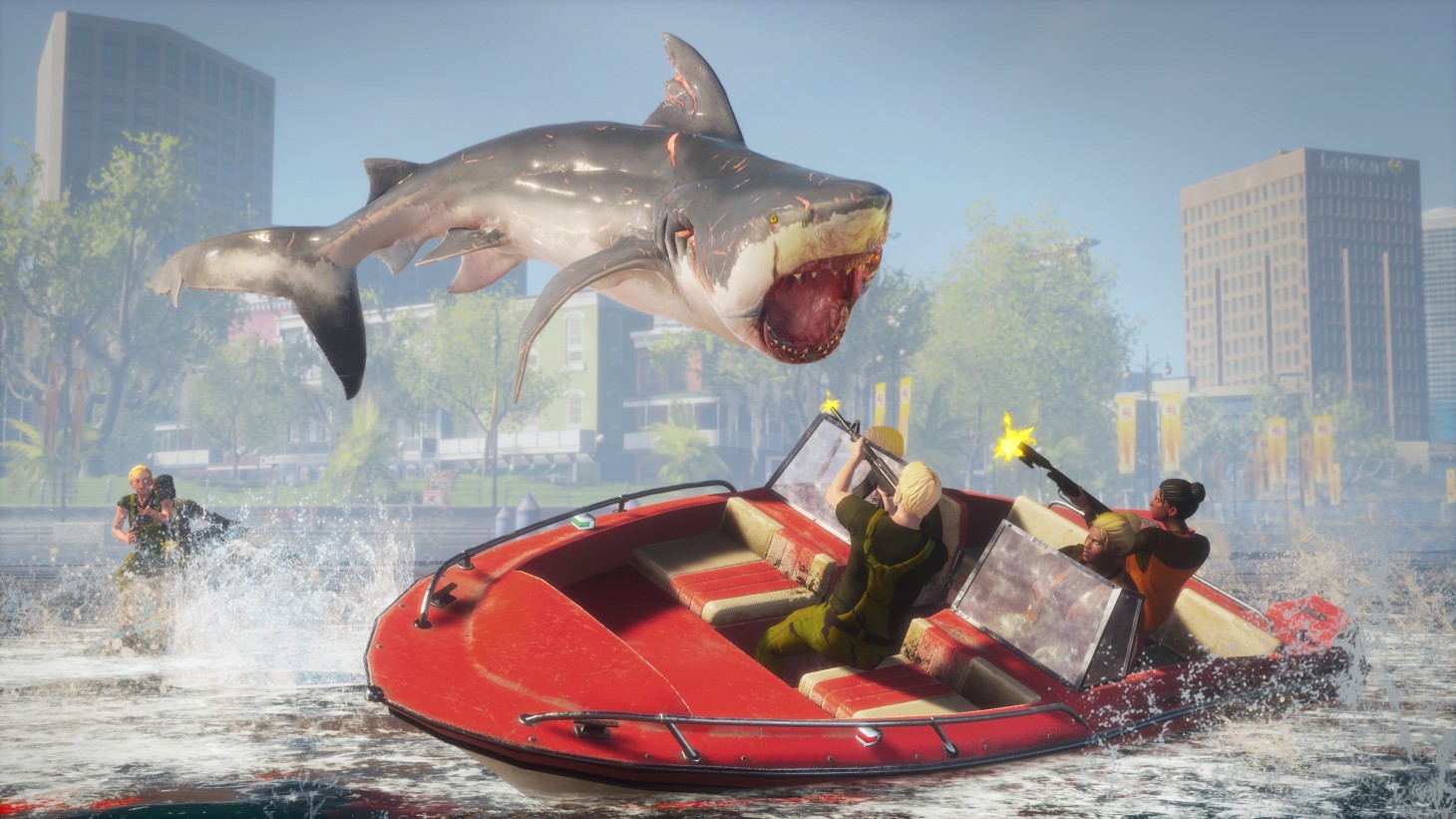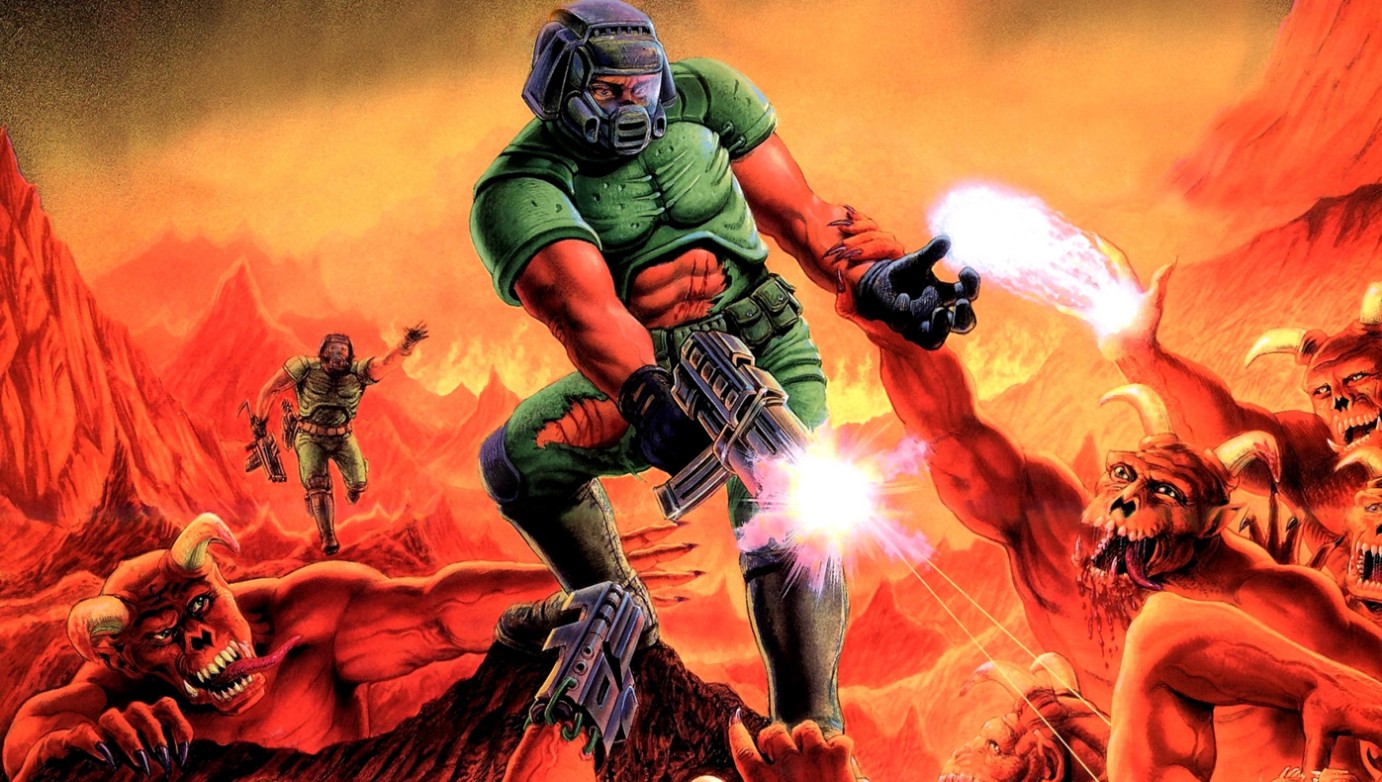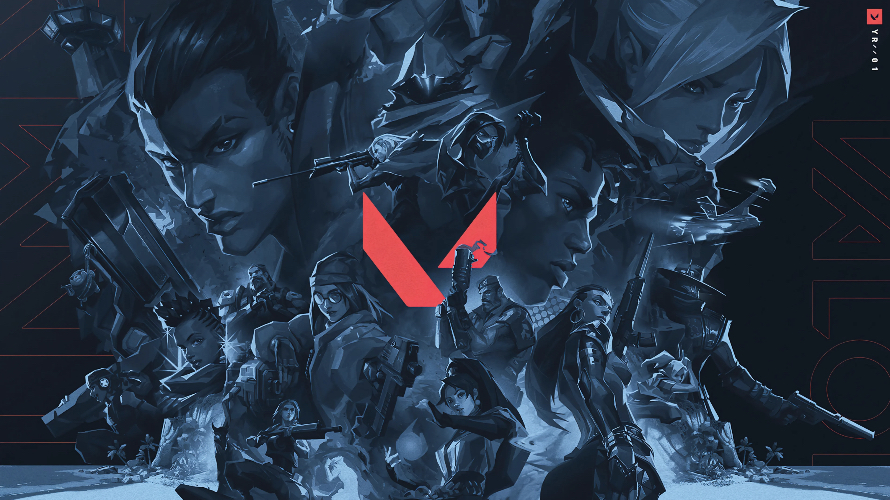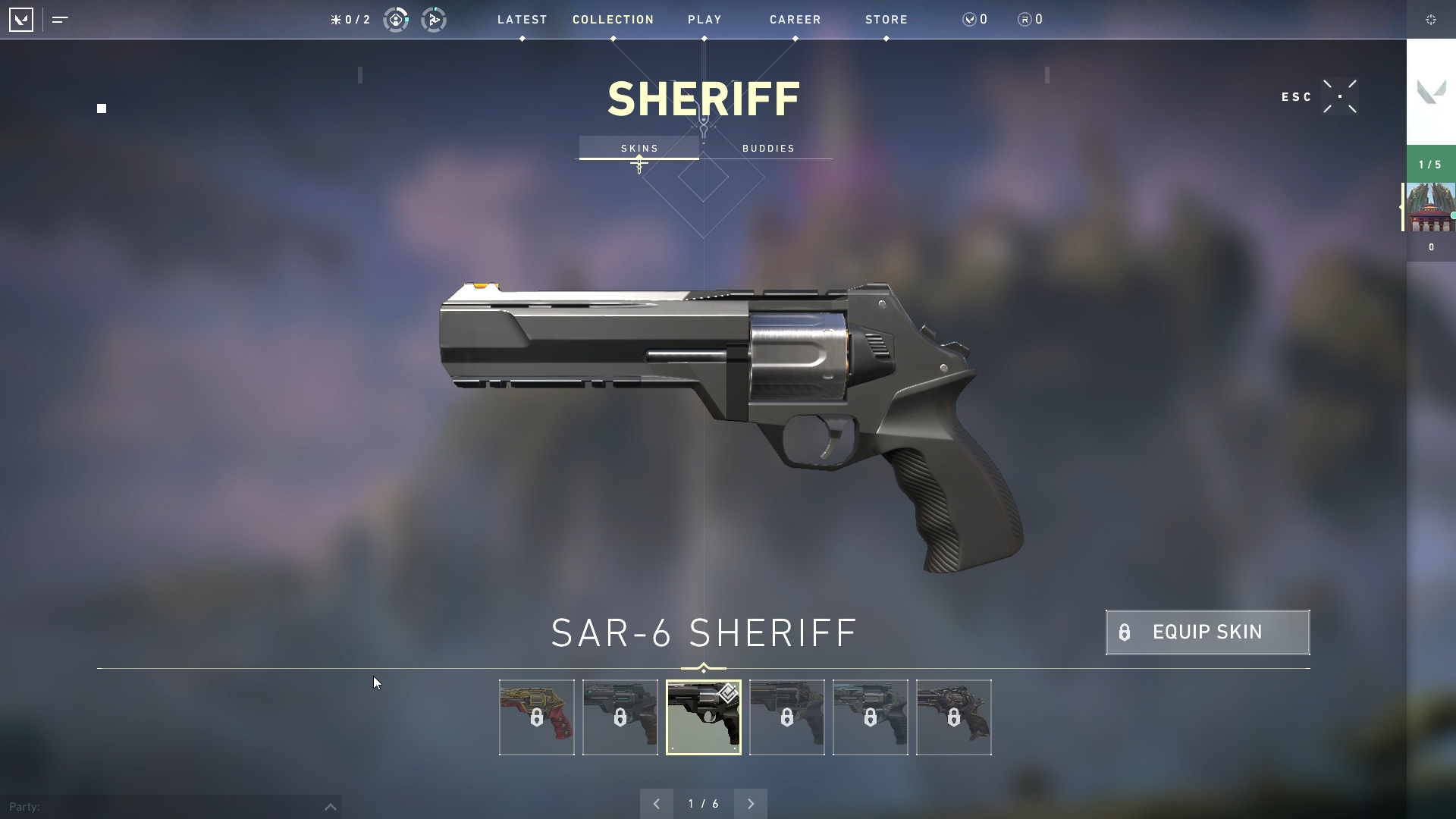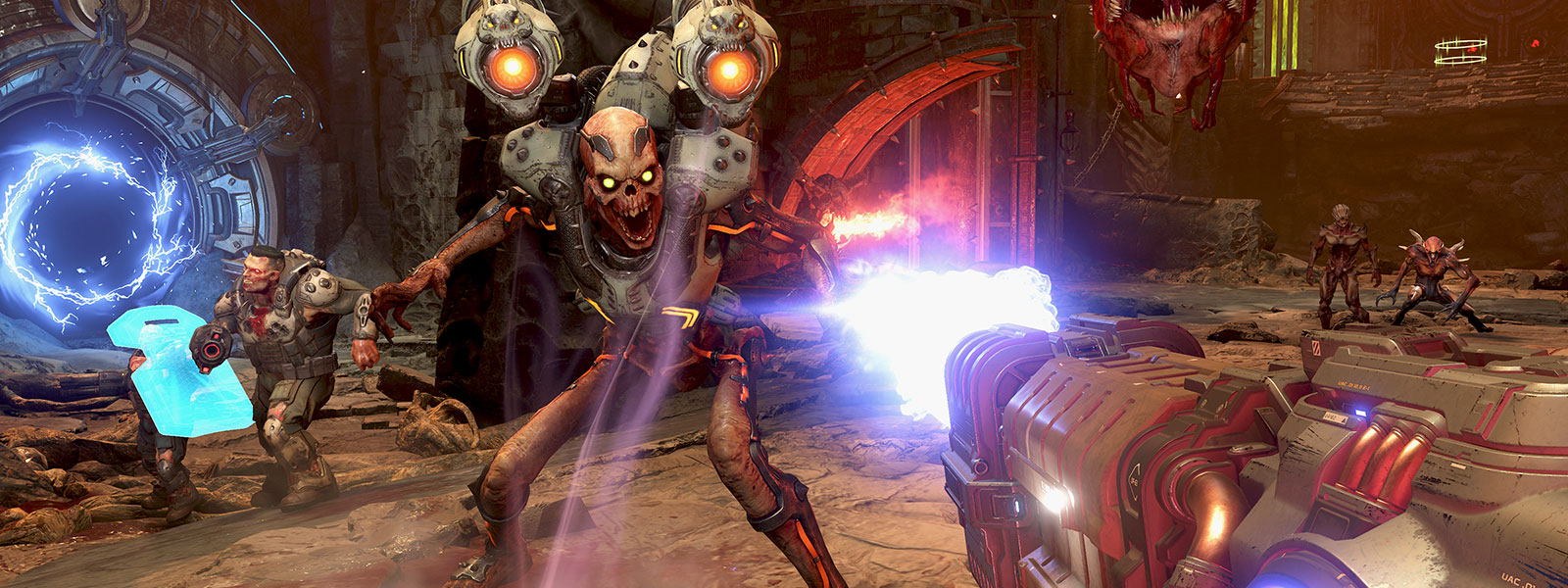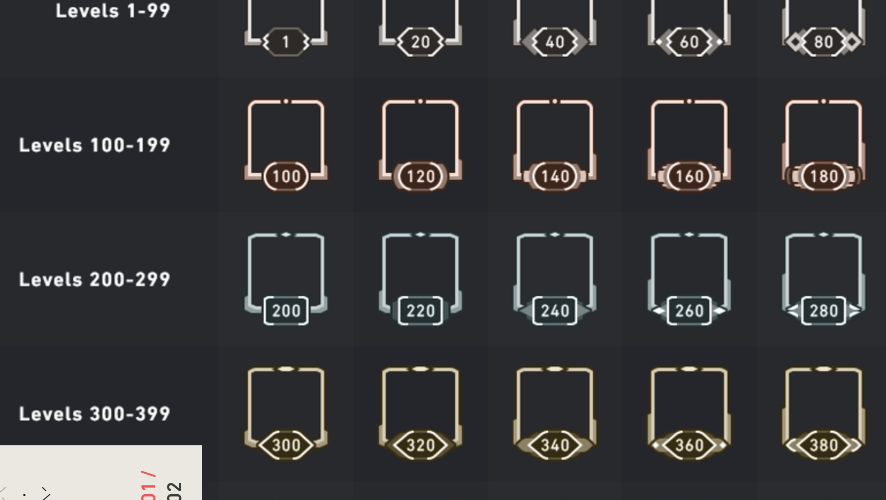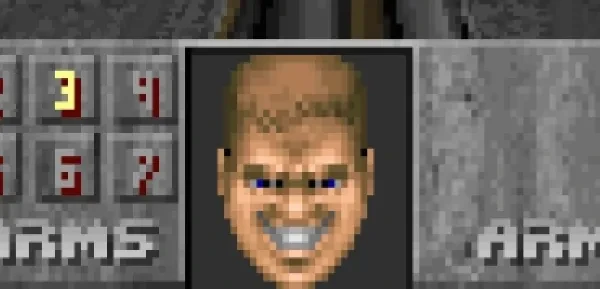
As the original 1993 DOOM is nearing its 30th anniversary, it's likely a good idea to remember what exactly makes it "the video game equivalent of Thriller", in the words of Civvie 11.
With many iterations, ports to different platforms, mods of every shape and colour and, at one point in time, an active competitive scene, DOOM really is a phenomenon that left a lot of legacy behind it, and has even more surprises ahead of us. But how so? Why does it hold up so well, and why do people keep coming back to an old DOS-era game? There's many factors to it, so sit tight.
1. The Baddies

The Ultimate DOOM
DOOM's iconography became synonymous with first person shooters as a whole even back in 1994, when the genre was known more as either "3D Action" or "DOOM clone". Imitators followed, trying to emulate as much of its success and visuals as possible, but only a few of them understood what makes it tick, let alone succeeded themselves.
While it doesn't take much effort to copy the HUD and the space marine angle, getting the nuances of how the weapons work and how the enemy roster's made up is a lot more complicated - not to mention more vibrant than what's in your layman FPS title.
For instance, anywhere else, you'd expect zombies to be somewhat slow, limping braineaters. Meanwhile, id Software gave them guns. Their humanoid silhouettes can be made out from 20 miles away, and you can easily snipe them from the same distance, killing them in one or two gunshots, - that being said, so can they: in a pinch, shotgun zombies and chaingunners can very easily turn you into mincemeat, should they fire at you from across the level.
This kind of balancing is preserved all throughout, with hellspawn like the brown and spiky imps: slightly harder to gun down, throw slowly-flying fireballs and can scratch your skin off should you get too close. Or the thick-skinned pinky demons, who can only roam around and chomp your face off - yet become very dangerous in droves or when you encounter their invisible counterpart, - the spectres. Or the flaming flying skulls, known as lost souls, who would take every opportunity to ram you.
You get the idea.
DOOM's enemy design doesn't take lots of notes from its predecessor, Wolfenstein 3D: you can tell who takes a bigger beating, but that doesn't mean they'll always be priority targets. They may deal lots of damage you can easily avoid. They may take up space you need to dodge the projectiles. They may get close and personal so you could accidentally die by your own rocket. The list of possible combat scenarios goes on.
True, some demons are still nothing but beefed-up versions of the imp: both the baron of hell and his little brother hell knight take longer to kill, while cacodemons can also fly. But that's where DOOM II's additions come in, with every new mid-tier enemy having an attack pattern that isn't "a slow fireball flying straight on". In particular, the arch-vile still strikes fear into the hearts of casual DOOM players - all he really needs is to cover their screen in flames...
The other most imposing of the hell folk even among those who haven't played DOOM yet is, no doubt, the cyberdemon: a walking tower with horns, a rocket launcher and a mean demeanour. Makes a fitting first impression when it blasts you right away. Those who did grind through DOOM lots, however, see him more as a valuable tool to clearing up hordes of enemies, without Doomguy's direct involvement.
Then again, how well or poorly the enemies are utilised depends on the map design. Again, DOOM's flashy-looking demonic hordes are not packets of instant threat to the player, they're tools of providing the challenge.
2. The Guns

DOOM II: Hell on Earth
Anytime you start a new game, all you have in your disposal is a wimpy pistol with fifty bullets and a fist adorned with a tiny gauntlet - probably the least useful items you'll encounter in DOOM.
It won't take you long before you really start packing heat.
Spread across the number row on your keyboard are nine weapons, - that's with the iconic super shotgun added in DOOM II, - with most of them being very satisfying to use, and each being practical in specific use cases. If it's ranged, it requires ammo, and it doesn't just lie on the road! ...well, okay, in this game, it does, but still, ammo scarcity can be a problem more often than not.
Either way, you'll spend most of your time on the UAC installations on Phobos and Deimos with the pump-action shotgun: an effective tool for picking off zombiemen and imps one by one, with a reload that really gets you in the rhythm of cleaning the moon bases up. And it works pretty well on long distances, too - in contrast to everything you may know about video game shotguns. The opposite, however, is true for the super shotgun, an even more powerful beast that deals as much damage close up as a single rocket (without the explosion part), with an even more rhythmic fire animation. Without a doubt, an all-time favourite of any self-respecting DOOM player.
That doesn't render the rocket launcher obsolete, though - it fires quicker and on impact, not only the explosion covers quite a bit of the ground, it blows fodder enemies into smithereens. Due to the way DOOM's collision system works, it's possible to fight one quirk with another: since every monster is infinitely tall, you usually can't walk above or (if they're the flying type) below them - but so is the blast from your rockets. So, if you ever find yourself not being able to hop on an elevator, try a rocket-propelled grenade or two.
About as useful for clearing up hordes of small fry is the rapid-firing chaingun (even though it looks much more like a minigun - still, the name stuck), as it is helpful in stunlocking certain enemy types. Give yourself a breather, make the demons constantly whine in pain until they go down, with the benefit of having to dodge less fireballs. Don't want to waste bullets to achieve all of that? Try a chainsaw.
The energy weapon ammo in DOOM is the rarest to come across, but with how powerful those weapons can be, it's a given. Granted, there's not much to say about the plasma gun: it's just a more powerful version of the chaingun that fires steaming hot balls of energy instead of bullets, but the ever so popular BFG9000 may be one of the weirdest guns to ever exist in an FPS, just by how it works.
Now, people new to DOOM would assume that the BFG9000 is a rocket launcher with more damage and bigger blast radius, but it's not exactly true: shortly after the big green BFG ball explodes, Doomguy emits 40 invisible tracers in the same direction the ball was fired. Hence even more damage, especially in close range. Mastering the BFG (and thus saving precious time and ammo) is an art that DOOM experts and speedrunners perfected so much they could easily kill a cyberdemon, - an incredibly tanky boss, - in only a couple of shots!
Nowadays, DOOM's guns may look like toys (doesn't help that most of them were indeed modeled after toys), but the old guard knows better. To them, it's like the Ol' Faithful of video game armaments - never lets anyone down. To many FPS'es that followed, especially id Software's, it became a good template for the arsenal ladder the player has to work their way up to.
...oh yeah, remember how we mentioned the fist was useless? Well, we kind of lied: grab a berserk pack and have fun punching imps into ground beef all you want. Or, at least, until you finish the level.
3. The Simplicity

The Ultimate DOOM
DOOM's gameplay harkens back to simpler times, when guns didn't need to be reloaded, when there were no escort missions to deal with, when you didn't have to sit through minutes of cutscenes and scripted sequences. From the very moment DOOM is launched, it only takes two seconds to get straight into the action.
Likewise, if you look at the setup executable for DOS DOOM, there's not a lot of keybinds you can change: only the most essential stuff like movement, shooting and activating switches. If you're going the keyboard and mouse route, you will use a total of seven keys, not counting the weapon row. If you figure out how to run without having to hold down Shift all the time, that's one key less.
Now, keyboard and mouse are still recommended to comfortably play DOOM, but even a six-button SNES controller would do just fine. You won't turn around as smoothly and precisely as with a mouse, but it's fine, since you can only look left and right anyway.
Yes, the first thing you'd need to get used to when playing DOOM is the inability to look up or down. You don't necessarily need to - just point in the general direction of the enemy, and the vertical autoaim will do the rest. Curiously, this feature isn't here due to a technical limitation, - there already were vector-based first-person games where you could look and shoot in every direction, such as Castle Master, Total Eclipse and even id's own Hovertank 3D, - it's there by design.
Predictably, this also goes for the gameplay: the most complicated part of Knee-Deep in The Dead and its two sequel episodes is navigating through large, maze-like levels and finding secrets scattered across them, but that's why you have an automap. Otherwise, there's only a few, if any, actual puzzles to solve, - aside from gunning down imps and zombies in the right order so they don't hurt you much, as well as finding your way out. Flip a switch on the wall - something will happen and will very likely lead you to progress.
Combat puzzles is where DOOM's simplicity shines the most, but also where a whole other realm of complexities arises, thanks in no small part to fan-made mapsets, as well as the officially released Plutonia Experiment. If you want to get good at the game, you need to practise the maps. You also need to learn about monster priority, infighting, firing the BFG the correct way, avoiding revenant missiles - but as long as you're up to the challenge, you certainly can do it.
4. The Speed

Meowgi's Training Hub
The immense popularity of COD4: Modern Warfare redefined the FPS genre as we know it: every new AAA release is made to be controller-first, complete with sprinting, - maybe coupled with a stamina metre, - and ironsights, - with a bit of autoaim thrown in. The stop-shoot-and-go gameplay loop has become so commonplace it's easy to forget it has not always been like this.
A common joke about DOOM, as well as "boomer shooters'' in general, revolves around the protagonist lugging around pounds upon pounds of ammunition while still being able to move around like a freight train. This visual took a while to take off, however: people who played DOOM back in the day, whether they thought of it as cosmic horror or as power fantasy, took their sweet time to complete a level - with the exception of John Romero and the rest of id Software, who not only speedrun their own game, but also included their level completion times for you to beat.
Of course, the ability to move fast isn't just there to blaze through the game: Doomguy may have a lot of deadly weapons in his arsenal, but his most valuable weapon against the invaders from Hell is, indeed, movement.
Dodging fireballs, dancing around enemies, running across radioactive goo, getting out of really sticky situations - there's no problem your ability to zoom around can't solve, not until you it really gets overcrowded. The only being in singleplayer that gets even close to Doomguy's speed is a pinky on the "Nightmare!" difficulty.
In deathmatch, however, everyone is a Doomguy, with swiftness to match. The 1v1 battles in DOOM really do put your aim and reaction to the test: in the span of five seconds, you could either kill or be killed, and then respawn - milliseconds after your health bar reaches zero. That's part of the fun, after all.
This section wouldn't have been complete without the aforementioned speedrun scene - which, when it comes to DOOM, is incredibly well-developed, more so than any other old game you can think of. Whether they'll be taking on the originals or a newly-released level set from the fans, there's a lot of categories to go around: from just discovering the most optimal route in the NoMo (no monsters) category, to completing the whole thing in one sitting on Ultra-Violence difficulty, with every monster hunted down and every secret wall unveiled.
The speedrunning community, however, wouldn't be themselves were they satisfied with the times they already had, - thus, they've managed to discover more coding oversights and platforming tricks throughout the years. For instance, everyone knows that running diagonally is a smidge faster than running in a cardinal direction - but did you know you could go even faster by strafing with your mouse, on top of that? Now you do.
5. The Source Ports

BOOMEDIT.WAD
The DOS version of DOOM aged much better than you would expect - just enough to comfortably play through the whole thing. It does need a bit of tinkering, but nothing really . Still, emulating the DOS version may not be enough for you. Or it may be - depending on your taste.
Then again, different people have different tastes - and that's why there's so many different ways to run DOOM on Windows, Linux and Mac.
Exactly five years after the original DOOM went out to the public, - in December 1997, to be exact, - id Software made the decision to release its' source code under the non-profit licence, later relicensed to be distributed under the GNU GPL, meaning that any future modification of idTech1, - the official name of the engine, - to also be open-source. Fans who were well-versed in C could only imagine what they could do to make DOOM bigger, better and better, which they were busy with for the following two years. Their work bore fruit, in the form of DOOM Legacy, BOOM and ZDoom, which still exist nowadays in one form or another, - but you can be sure they were significantly overhauled from what they used to be.
Before 2000, source ports existed so that people could get more out of DOOM, expand its capabilities. Nowadays, source ports exist less to establish new standards and more to cater to the needs of different players.
As an example, BOOM was something that introduced stuff like translucency, custom sky textures, wall textures scrolling in any direction other than just left, conveyor belts and silent teleporters, - a feature that allowed many to emulate multi-story buildings and structures while skirting around DOOM's universal "one ceiling, one floor" limit. While the format still exists and is still widely used by mappers to this day, PrBoom+ and its fork DSDA-Doom are valued for being more of a speedrunner's swiss knife than what their predecessor has set out to do.
Likewise, there's Chocolate Doom - for when you want the original DOS experience without the hassle of setting up an emulator or an old rig straight from the 90s. It's mostly a no-frills experience, with only a few quality of life options and every vanilla bug left in, as is, but that's how most people were introduced to the game, right? At this point, Chocolate Doom is the source port with the most modifications others have done to it, with Crispy Doom being the most popular one, adding widescreen support, unlocked framerates and removing limits on how many sprites, walls and floors can appear on the screen at once. Still, it keeps the core experience as vanilla as possible - you can even still connect to Choc's multiplayer lobbies!
The ZDoom family of ports stands in a league of its' own, with GZDoom becoming less of a source port for every idTech1 game, including Heretic, Hexen and Strife, and more of a starting kit for people who want to make their own oldschool FPS. A game engine, if you will. It goes without saying that it's the most popular one out of the bunch and, thanks to its flexibility, is home to hundreds upon hundreds of mods and total conversions. That said, it's not really optimised for weaker hardware - something you'll see for yourself if you run a map with thousands upon thousands of enemies.
The modern DOOM multiplayer scene also holds up thanks to source ports, particularly Zandronum, ZDaemon and Odamex. As one would expect, each port comes with different benefits - in particular, Zandronum also supports plenty of gameplay mods that turn the whole experience into something less DOOM-adjacent, while Odamex stays vanilla with support for 255(!) players. What they have in common is going beyond the usual pool of multiplayer activities, - that being deathmatch and co-op, - and introducing modes like Instagib, Capture the Flag and Horde into the game. Singleplayer is still supported if you're craving it.
Obviously, this is only scratching the surface of how people augment the normal DOOM experience without resorting to gameplay mods, and that's without mentioning 3D models, crosshairs, multiplayer bots, widescreen-friendly graphics, even tiny details like Doomguy's face in the HUD having more sprites for the god mode than just one. We'd be here all day if we listed everything.
6. The Fact It Runs on Everything

DOOM on the Game & Watch - stacksmashing on YouTube
The whole "DOOM can run on everything" myth hasn't always been true. The minimal system requirements for the 1993 original were a 386 CPU and a VGA graphics card, with a 486 processor recommended. Not a rig everyone at the time had or could afford - and it won't even give you the smoothest experience, unless, of course, you're okay with playing DOOM on a screen the size of a postage stamp. And without a graphics card that could output 256 colours instead of 16, you'd be stuck with id's own Catacombs 3D, as well as many of Apogee's sidescrollers.
Despite that, DOOM was a feat mindboggling enough to catapult the PC gaming market straight into heavens, and it may have also played a vital role in making more powerful PC hardware more accessible to the common man. Well, it still wasn't cheap in the slightest, but chances are, if you got a Pentium I computer only a few years after DOOM was released, you could finally run the game without experiencing a single stutter.
That, of course, didn't stop the influx of console ports from many, many dev houses - including id Software themselves, who were responsible for the Atari Jaguar port. Not all of them were accurate to the original, and definitely not all of them were as playable, but without the PlayStation version, we wouldn't have had the dark, gritty and atmospheric Doom 64. Funnily enough, the SNES port was also the only console port of DOOM ever to not just feature all three boss monsters, but also to have some sort of online multiplayer, powered by the X-Band modem.
The days of having to drastically rewrite the source code for weaker hardware or use an all-new engine for DOOM ports are in the past, however. Also gone are the days when consoles could boast hardware unique to them - nowadays, every relatively smart device is either a PC under a different name or a well-known microcontroller. That's probably the mindset that gave birth to the question: "can it run DOOM?"
More often than not, the answer is "yes".
Thanks to the aforementioned Chocolate Doom, running the game on literally anything, even if it's never been meant for gaming, has become less of a hobby project and more of an artform. Heck, running Choc on a Raspberry Pi, - a $35 single-board computer, - is one of the first projects people are suggested to do when they get ahold of the thing. And RPi's have been put, either by amateurs or professionals, inside of cars, smart mirrors, DIY handhelds, and even industrial devices - so you bet you could play DOOM on those. At least, in theory.
Even without single-board computers, putting DOOM where DOOM shouldn't have been is pretty common. If an ATM near you runs Windows - it qualifies. Your web browser - yes. Your task manager - why not? Garry's Mod? Bring it on. How about an old Kodak digital camera from 1998? That one, surprisingly enough, can also run DOOM. Hardware older or less powerful than any IBM PC out there? Make a Wolfenstein 3D clone on it and furnish it to look like DOOM, no biggie. DOOM running inside of the original, unmodified DOS executable? Is that even physically possible?
While not as surprising, amusing or funny, there's also a recent attempt to get DOOM running on Raspberry Pi Pico - not a single-board computer, but a proper microcontroller, - which turns it into a device for playing DOOM and nothing but. And, as a cherry on top, it has multiplayer. Not bad for a device that only comes with 2MB of flash memory - which houses the entire shareware episode in itself (for reference, the original shareware WAD was twice as large, coming at 4MB).
In a somewhat meta sense, you can now run DOOM on IBM-compatible PCs so old they could barely handle Wolfenstein 3D! All thanks to the wonders of FastDoom, which optimises the game even further and adds a plethora of graphical options for that extra boost in performance. And it's not just one executable - there's at least two dozen of them, most suited for graphics cards released before VGA. What this means is that you can run DOOM in 16 colours. Or, if your old rig can't play it at a reasonable speed, stick to textmode. If you still can make things out, do you really need crispy, detailed graphics that much?
7. The Multiplayer

GothicDM
To id Software, the need to make deathmatch-only arenas came with Quake. Before that, DOOM's level design was built to accommodate both the singleplayer campaign and the multiplayer outings: more often than not, the maps were non-linear, meaning that you'd often backtrack to rooms you were in before, often multiple times. Depending on the map, however, it would take a while for anyone to find the big guns, which is expected in co-op, but isn't as fun in deathmatch.
In fact, DOOM's multiplayer felt like a welcome, but a somewhat rudimentary addition. It did have a text chat, complete with macros, but no matter if you were playing the game in co-op, "old" deathmatch or "new" deathmatch, friendly fire was always on. The score tally screen even kept a frag count, showing who tripped on the circuit breaker and died on their own, as well as those who were so bloodthirsty they were killing their own teammates. Obviously, the frag count was far more relevant during deathmatches, just make sure you keep the monsters away from them. 'Cause some people forget to.
Oh, and everyone participating had to join the lobby before the game proper started, and after it did - the lobby got locked: no one in, only outs. And, if someone's connection dropped, you'd have to make a new lobby just so they could rejoin. Mind, it wasn't just a DOOM thing, it's something you'd have to do with almost every DOS first-person shooter you could think of.
Needless to say, a lot of developments have taken place since.
At first, deathmatch-only maps were made by people who obviously were new to DOOM level design - that's not to say level design in general. Most players still swore by the keyboard, either being unaware of DOOM supporting mice or not finding those comfortable enough for whatever reason, sometimes even preferring a cross-armed setup in their stead.
People could only connect to each other either locally via Ethernet (or, more specifically, via the outdated IPX network protocol) for four-player action or via 56K dial-up modems for far-distance duels, - meaning you'd either have to lug your (bulky and heavy) PC to someone else's house for the true LAN party experience, or hope that no one calls your home phone for the next two hours.
Things have slowly started to even out with DWANGO - a matchmaking service initially designed with DOOM in mind, and then expanded to support even more games. Now there were players with nicknames, lobby chatrooms and even the ability to fight three more people over dial-up - not the fastest thing ever, but people didn't seem to mind much. DWANGO has become a huge mecca for DOOM players around the U.S. and, eventually, other countries - foreign phone calls weren't cheap, and neither were DWANGO memberships. At least, at first.
A lot of things have happened throughout DWANGO's short lifespan: an official tournament with prizes, over twenty compilations of best DM arenas at the time, freshly-baked pros trying out their best to make worthwhile DM levels and, most importantly, how the average PVP gameplay went from hiding behind walls and awkward aiming to high-octane and neck-breaking fragfest. Cross-armed keyboard-only setups would steadily go out of favour, leaving the other hand for the mouse - something that even casual players would learn, moreso after the release of Quake and its' sequel. It helps that the new maps do favour this kind of gameplay a lot more: just load up GothicDM or DMC2: Immortal Thoughts and watch that 1997 magic unfold before you.
DOOM's multiplayer marched on, and so did the technology - due to increasing competition, as well as new games allowing anyone to play against each other over the internet, for free, DWANGO's American division was shut down late 1998, leaving four years of service behind it. Funnily enough, its' Japanese division is still around, - not as a matchmaker, but as the owner of the video site Nico Nico Douga.
So, DOOM has already established itself as the fastest multiplayer FPS to grace this green Earth - then, now and for years to come. No one wanted to leave it at that, not after DWANGO's eventual demise. So what would you do in this situation? How about bringing it out to the streets, - as in, the open, proper internet?
That's what the ZDoom-derived csDoom has set out to do, using the highly stable server-client codebase from QuakeWorld, However, a controversy involving the source port's creator, Fly, implementing a backdoor that allowed him to control any server, as well as a hard-coded IP ban specifically for Tom "Mystician" Robinson, has led others to use csDoom's network code for the newly-made ZDaemon and Skulltag. The offending code has not been present in csDoom after version 0.61 - and hasn't been there for the six years this port was alive for. In 2007, however, its lack of support paved the way to an improved successor known as Odamex.
Those have become the three most popular multiplayer DOOM ports on the scene, with the exception of Skulltag - that one has evolved into Zandronum. The latter became a mainstay among casual players for its mod support, roughly in the same vein GZDoom is popular, but for actual, grown-up DOOM tournaments, Odamex has become the definitive choice.
All things considered, even though we're way past the golden age of DOOM multiplayer, it's still alive and kicking, with a competitive scene, to boot. And while there hasn't been a lot of tournaments with the exposure of Deathmatch '95 or that one time QuakeCon 2021 had a DOOM II tournament, there is a couple active leagues that host plenty of seasonal or yearly events, sometimes even with money prizes: Multiplayer Doom Federation and World Doom League - the latter focuses strictly on Capture the Flag mode. Time will tell how this scene will develop, as both MDF and WDL are planning to unite as a new entity, - Doom Central, - but in the meantime, you could always check Vengeance and Take the Crown to get your fill of modern DOOM PVP.
8. The Challenge

Sunlust
Not everyone knows that DOOM didn't always have five difficulty levels it's remembered for. Long story short, prior to version 1.2, many people on BBS'es have complained that Ultra-Violence is too easy. We may never know whether they've actually completed all three episodes, or if they were bluffing (though it's very likely the latter), but, in John Romero's signature fashion, the next version of the game included Nightmare! - a skill level so unfair the game explicitly warns you about it.
More often than not, Nightmare! is considered to be a joke difficulty, mostly because of how much it transforms the whole experience: monster projectiles fly twice as fast, pinkies walk twice as fast, crowds of gun-toting zombiemen turn from mere fodder into firing squads. Most importantly, every enemy you kill will spring back to life in a few seconds. One of the few small mercies you get is doubled ammo pickups, - not like it matters when you aren't careful enough.
None of that stopped certain madmen from completing the original DOOM on Nightmare!, as well as its much more difficult sequel.
Which begs the question: how did Romero's big flex on the BBS posters get cracked, even if it took a while? Skill and persistence are obvious enough answers, but a big factor in it was the release of Final Doom: The Plutonia Experiment.
Authored by the brothers Milo and Dario Casali, this level replacement was made to be as devilish as possible: if it wasn't difficult enough during playtesting, they've upped the ante. Lots of revenants, even more chaingunners, cruel enemy placements, traps, unorthodox and sometimes unpredictable level design, and, of course, the infamous arch-vile maze. You'd think all of the above would turn many people off, but no. Only a few. In fact, Plutonia became such a (undeniably cult) classic it even got a fan-made sequel - played by Dario on his own YouTube channel, no less!
And the skill ceiling only goes up from there.
There has always been a subset of players that craved something more challenging, all the time - something they got plenty of, even in the late 90's. Granted, some of the more extreme mapsets were criticised for relying less on blood-pumping gameplay and more on tedium, with "shotgunning barons'' being Hell Revealed's running gag (it takes around 20 seconds to take one baron of hell down with the super shotgun - imagine how long it'd take to bring down twenty of them and how many thing you could've done instead).
The bar went even higher, since modern source ports of DOOM were no longer held back by the original's hard-coded limits on how many walls, floors and monsters could appear on screen at once, meaning that instead of tens upon tens of demons, you could be facing hundreds upon hundreds of them - and you'd better believe that's a significant jump in numbers. Also, instead of running inside of flat-looking rooms, you could be fighting the horde in something much more picturesque, like a hell void filled with illustrious towers, tall pillars and gargantuan cliffs.
Thus, the 2010's saw the rise of slaughtermaps - levels whose population nearly always outnumbers you, 200 to 1. The exact definition of a "slaughtermap" varies from person to person, but one thing for sure: a memorable slaughtermap doesn't focus on running and gunning the hellspawn, as instead, it presents the player with a set of combat puzzles, most of them involving intelligent usage of weapons (especially the BFG9000), navigating through crowds, monster infighting and, obviously, not getting killed in the process.
Adding up to the difficulty, slaughtermaps are ginormous in size more often than not, and can take over an hour to fully 100%. Some players do consider it worthwhile, as Insane_Gazebo's Sunder and Ribbiks's Sunlust (co-authored with dannebubinga) are a sight to behold, but it's understandable why some wouldn't - Sunder can already be considered DOOM's equivalent to Tolstoy's War and Peace, and it isn't even finished yet! Thankfully, some mappers have caught onto that and have come up with Micro Slaughter Community Project - a sort of tutorial for experienced DOOM players who want to get their feet wet.
Even vanilla DOOM can be as hard as you want it to be: you can complete every level "naked" (pistol-starting), without firing directly at monsters (pacifist) or without using any weapons other than the fist and, in some cases, the pistol (Tyson). Naturally, this implies you should forget about saving and rely on your guts instead of your luck. And, if you want to complete the map as quickly as possible, you've got one hell of a challenge ahead.
Are you up for it? It's okay if you aren't, but even then, it doesn't hurt to try.
9. The Overabundance of Mods

REKKR
You saw it coming! After all, it does get boring to play the same 32 maps of DOOM II over and over again, right?
id Software has bet on the right horse when they made DOOM to be mod-friendly out of the gate. Their previous titles, Wolfenstein 3D and Spear of Destiny, had most of their data stored inside of the executable, meaning that if you wanted to distribute a new level, you'd basically have to share the whole (modified) game. DOOM, on the other hand, kept the levels, the graphics, the sounds inside of an archive file, with the .WAD extension (standing for "Where All Data") - and it helps that even more WAD's could be loaded on top of the main game data!
To nobody's surprise, early fans of DOOM were giddy to make their own stuff for the game. It took a while for them to improve their mapping skills, hence why the term "1994 WAD" is used to denote any boxy-looking map with unobvious progression, yet very obvious texturing errors, but it only took a few years to get there. Three or four, depending on who you ask.
Graphical and sound replacements were a given: at least a few people wanted to murder Barney the Dinosaur in cold blood, and DOOM gave them that ability, but none of those mods took a lot of effort to make. Not to mention that gameplay-wise, it didn't feel any different from normal DOOM.
Gameplay modifications started popping out a bit later, with the creation of Dehacked - a tool that could change around some of DOOM's hardcoded properties, most importantly the animation tables for every single entity in the game. And, since some animation frames had a specific action attached to them, this allowed many to pretty much create new monsters and, with that, total conversions - both commercial and freeware. Working with Dehacked is not at all easy, and even then, the end result is going to unmistakably feel like DOOM no matter what (just look at the HUD), - that said, TC's like Batman Doom and REKKR still have managed to transform the original demon-slaying experience into something else entirely.
The continued development of source ports meant that even more complicated maps, gameplay mods and total conversions were about to happen, with (G)ZDoom being the cornerstone of it all, thanks to its' support of ACS and DECORATE scripts. ACS was nothing new - Raven came up with it specifically for Hexen, whereas DECORATE was designed specifically for ZDoom, to streamline everything you'd do in Dehacked, without any of its limitations.
Of course, the mod portfolio doesn't begin and end with just Brutal Doom - there's a ton of QoL improvements, weapons, reimaginings and even crossovers with other games, such as Samsara, Painslayer or Descent Doom, which, as per its' namesake, turns the game on its' head. Literally.
Prefer vanilla gameplay but tired of using the same weapons all the time? Final Doomer+ features nine weapon sets inspired by several assorted mappacks. Think your firepower isn't powerful or fiery enough? Pillowblaster's mods like Guncaster or Russian Overkill should be up your alley. Want to put more run'n'gun into your run'n'gun game? There's Contra Doom and Iron Snail - the latter obviously being a play of words on Metal Slug.
The pool of quality-of-life enhancements is even deeper and wider. There's Vanilla Essence which introduces a magic "retro" button into the game, in vein of many recent video game remakes. There's Intelligent Supplies which lets you pick up items partially, instead of letting 24% of that medkit go to waste when you're already at 99% health. There's Loot Markers which marks every item you come across on the automap, allowing you to easily come back to it later. And, if you can't play DOOM at all due to blindness, there's the Toby Accessibility Mod which adds more sound cues and tools to make exploring the map much easier for you.
Predictably, that's only a small fraction of mods that can be downloaded off the internet - this is only a tribute, not a compendium. Still, if you have some time to kill, give those mods we've mentioned a shot.
10. The Community

Poogers
As you'd expect, none of DOOM's current popularity would've been possible without its' loving, creative and, most of all, persistent fandom.
It doesn't even matter if they're youtubers or speedrunners taking on different challenges, deathmatchers cranking out five frags per minutes, mappers creating intricate level designs with no less intricate combat challenges, artists and musicians who help give DOOM projects their unique flavour, coders who find ways to optimise and enhance the all the ripping and the tearing or even community managers who keep all of them in order.
No matter who they are or where they're from, make sure you thank them. Without them, not even DOOM's popularity, but DOOM itself wouldn't be where it is right now.

